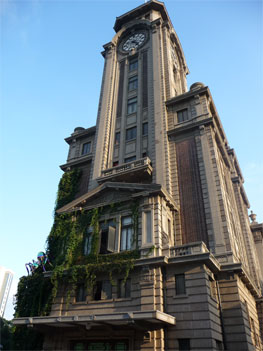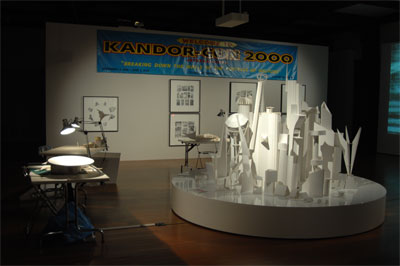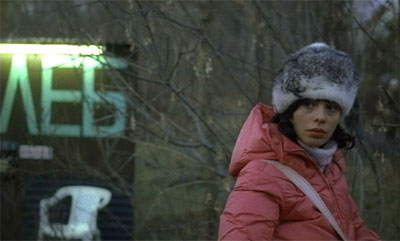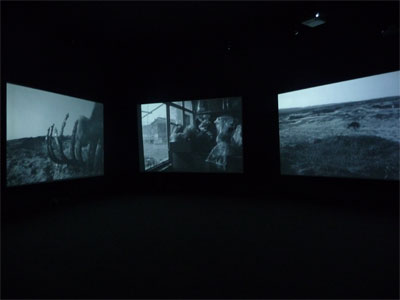
I arrived by air over the uniform grid-like cityscape of Shanghai, a graphic image that acted as an uncanny precursor to this year's bienniale. In the center of the slick corporate heart of the city resides the location for the 7th Shanghai Bienniale, at the Shanghai Art Museum, a former colonial equestrian sports club now surrounded by Western coffee chains and mirrored towers. Curators Julian Heynen and Henk Slager employ their neologism 'Translocomotion' to title a show dealing with issues of migration and urbanism both particular to Shanghai and in a wider context. In comparison to Guangzhou's "Farewell to Post-Colonialism," the show was carefully organized and maintained a well rehearsed theme. That said, it came across as rather sterile, despite some remarkable works by Chinese and international artists. Divided into three main sections, spatially and thematically distinct but interdependent, the Shanghai Biennale comprised 'Project', 'Keynotes' and 'Context', with an annex devoted to the heritage of the People's Square, a park next to the museum.
'Project' on the ground floor and on the external peripheries of the museum involved 25 different artists, each commissioned to work in response to the People's Square. One stand out was a series of videos by Ayse Erkmen which captured many of the clichés and western interpretations of the dynamically expanding city of Shanghai. Zhou Tao's video, 1,2,3,4 was a hilarious parody of the militaristic chants typically sung by Chinese service industry employees as a form of unifying the workforce. A couple of installations from Bethan Huws and Yin Xiuzhen were worth the pause.
'Keynote' on the second floor was devoted to just three major artists or groups. Mike Kelley's Kandor-Con was a disturbing alternate sci-fi reality, embodying real-life issues facing the architectural and sociological mutations in today's urban China. Lonnie Van Brummelen and Siebren De Haan's film and sculpture installation Monument of Sugar was a rich investigation into European and Chinese borders, immigration and the sugar trade while making the audience acutely aware of the strategies of film to portray such subjects. After coming upon Yue Minjun's tacky giant fiberglass dinosaur sculptures, I headed to the third floor.

The presentation of this biennial was impeccable and I enjoyed wandering through the exhibits. Clemens von Wedemeyer's double screen film and video work is a stunningly beautiful film with an accompanying documentary. The film, Otjesd, is a single night time shot of a fictional border in a remote and unknown forest location, where actors stood in lines and small crowds with no apparent purpose. The diagrammatic paraphernalia deconstructing notions of migration found in Harun Farocki's In-Formations was reminiscent of Wu Shanzhuan's Yellow Flight from the Guangzhou Triennial. An interesting attempt at measuring the world according to the height of the audience from Roman Ondak and an arresting photographic study of state border lighthouses from Charles Yi Yong Lim rounded out a mostly safe Germanic, Dutch and Chinese biennial.

The next day I visited 50 Moganshan Road, which is an overwhelming array of contemporary galleries and design offices in disused warehouses interspersed with expensive coffee shops and art bookstores. The best of the bunch is to be found at ShanghArt where local artist Yang Fudong's new work was on display, East of Que Village. The piece was a six-channel black and white video installation which presented, side by side, documented footage of wild dogs and the harsh daily life of rural inhabitants. Fudong makes a questionable and uneasy parallel between the two subject matters, one that was further complicated by the multiple layers of audio. Such a dramatic and rich work leaves me contemplative and a little morose until I climb to the fourth floor of a warehouse and fall upon BizArt's Chinese contemporary photography show, "Insomnia." Fudong reappears here in a more modest but still photographic form, keeping company with some refreshing works, which included Yu Ji's Helicopter and a Sophie Callesque detective narrative in Zhou Xiaohu's Rear-End. I received a couple of catalogues, bought a few books and prepared to catch my train to the ancient capital of China, Nanjing.


